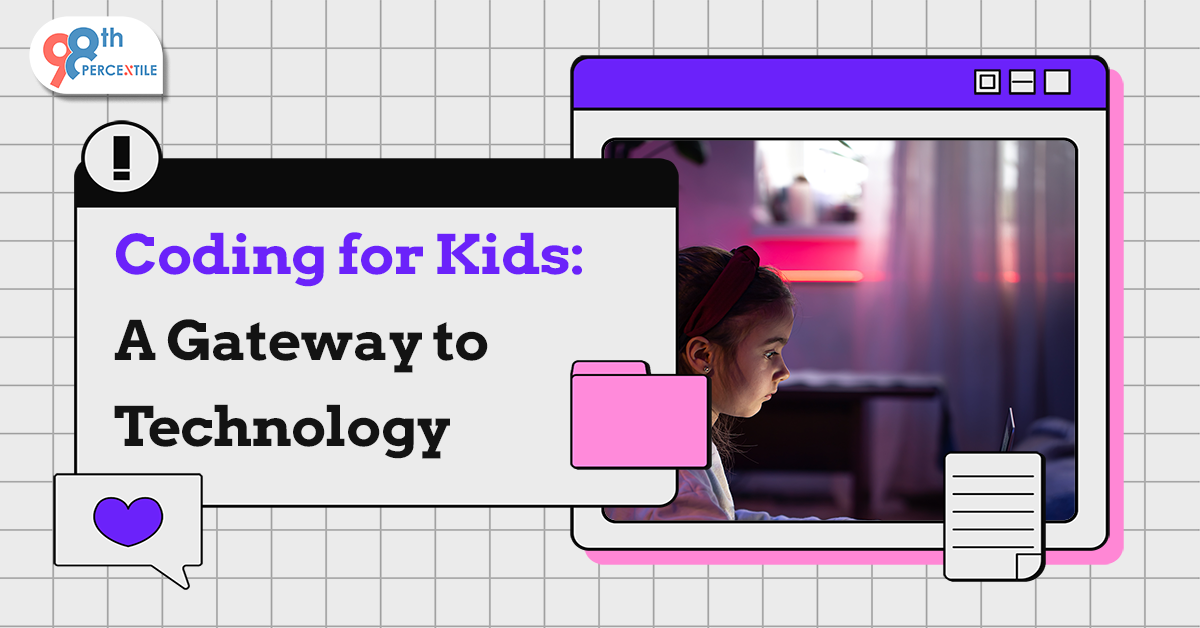In today's digital era, where technology is omnipresent, understanding the language behind it has become a crucial skill. Coding, once reserved for tech enthusiasts and professionals, has now found its way into the educational curriculum, especially for kids. Introducing children to coding at an early age has become increasingly popular, not merely to create the next generation of software developers, but to equip them with fundamental problem-solving skills and a deeper comprehension of the digital world around them.
Why Teach Kids to Code?
Coding is more than just writing lines of text; it's a means of logical thinking, creativity, and problem-solving. Teaching kids to code from an early age cultivates these essential skills, fostering a mindset of innovation and resilience in the face of challenges.
- Encourages Logical Thinking: Coding involves breaking down complex problems into smaller, manageable parts. Teaching children this step-by-step approach helps enhance their logical thinking and analytical skills.
- Fosters Creativity: Writing code is akin to crafting a story or building a structure. It allows kids to express their creativity by creating games, animations, or stories, instilling a sense of accomplishment and pride.
- Enhances Problem-solving: Programming often involves encountering bugs and errors. By debugging their code, kids learn the invaluable lesson of perseverance in problem-solving, teaching them that failure is a stepping stone to success.
- Preparing for the Future: In a world increasingly reliant on technology, coding is a valuable skill set. Introducing kids to coding at an early age prepares them for future careers in a wide array of fields, not just limited to software development.
Begin Your Child's Coding Adventure Now!
How to Introduce Coding to Kids?
Introducing coding to children doesn't necessarily mean sitting them in front of a computer with complex programming languages. Instead, it involves a gradual, playful, and interactive approach that makes learning enjoyable.
- Visual Programming Languages: Start with visual programming languages like Scratch or Blockly. These platforms use block-based coding, making it easier for kids to understand programming concepts without getting bogged down by syntax.
- Interactive Games and Apps: There are numerous games and apps designed specifically to teach coding to kids in a fun and engaging manner. Games like Code.org, Tynker, and Swift Playgrounds gamify the learning process, making it enjoyable for children.
- Robotics and STEM Kits: Hands-on experience with robotics and STEM kits provides a tangible understanding of how code translates into real-world actions. Building and programming robots or circuits brings an element of excitement and experimentation.
- Coding Clubs and Workshops: Enrolling kids in coding clubs or workshops fosters a sense of community and collaboration. These platforms provide a conducive environment for learning and sharing ideas among peers.
The Impact of Coding on Children
The benefits of introducing kids to coding extend far beyond just learning a programming language. It cultivates skills that are valuable in various aspects of their lives.
- Improved Academic Performance: Coding encourages problem-solving and critical thinking, skills that can enhance performance in other subjects like math and science.
- Boosts Confidence: As children successfully create projects through coding, it boosts their confidence and self-esteem, showing them that they can overcome challenges with persistence.
- Fosters Adaptability: Technology evolves rapidly. Teaching kids to code instills adaptability, encouraging them to embrace change and new technological advancements with enthusiasm.
- Encourages Collaboration: Coding projects often involve teamwork. Kids learn to collaborate, share ideas, and work together towards a common goal, honing their communication and interpersonal skills.
Challenges and Solutions
Despite the numerous benefits, introducing coding to kids also comes with its challenges. Lack of resources, limited access to technology, and the need for trained educators are some hurdles. However, concerted efforts can overcome these challenges:
- Access to Resources: Organizations and governments can collaborate to provide access to computers and coding resources in schools, libraries, and community centers.
- Educator Training: Training programs for educators can equip them with the necessary skills to teach coding effectively, ensuring quality education for children.
- Partnerships and Initiatives: Collaborations between tech companies, educational institutions, and non-profits can create initiatives aimed at making coding education more accessible to children from diverse backgrounds.
Making Coding Accessible and Enjoyable
Making coding accessible and enjoyable for kids is crucial in fostering their interest in technology.
- Interactive Learning Platforms: Utilize visual programming languages and interactive platforms like Scratch, Blockly, or Code.org. These platforms playfully present coding concepts, making learning enjoyable.
- Hands-on Activities: Engage kids in hands-on activities with robotics kits or coding games. These tangible experiences make abstract coding concepts more concrete and relatable.
- Encourage Exploration: Let children explore and experiment. Provide them with the freedom to create and make mistakes, as this is where some of the most valuable learning occurs.
Book Free Coding Trial Classes Now!
Introducing children to coding isn’t about forcing them into a particular career path; it’s about opening doors to endless possibilities. It's about providing them with the building blocks to understand, interact with, and shape the technology that will define their future. Coding empowers kids to become creators, problem solvers, and innovators in a world where these skills are invaluable. By nurturing their curiosity and passion for technology today, we’re preparing them to lead and succeed in the tech-driven world of tomorrow. As parents, educators, and mentors, it’s our responsibility to provide them with this invaluable skill set and watch as they unlock their potential, one line of code at a time.
The journey of learning to code starts with a single line and blossoms into a world of infinite possibilities. Embracing this journey for our kids is not just preparing them for tomorrow but empowering them to build it.
Join 98thPercentile for more information.

 Students/Staff
Students/Staff Parents
Parents ElevatEd
ElevatEd














